History of dance: Samba (part 2)
Dance is the most popular recreational physical activity in the world because of its entertaining character and accessibility to all age categories. Basic steps of sport dances are easy to learn. Dance can be an interesting recreational activity viewed from the social and kinesiological aspect.
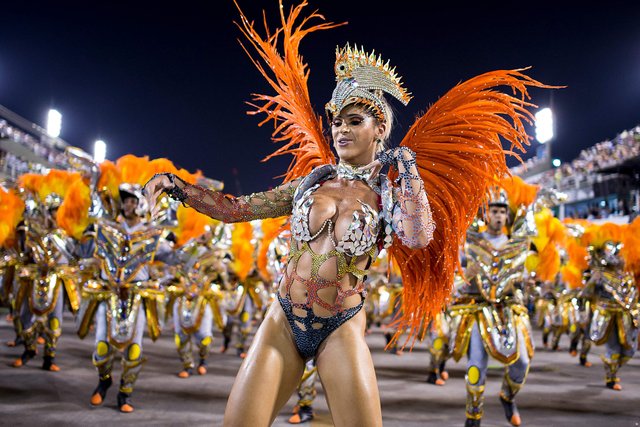
Dancing in pairs, as a form of social activity, appeared in Europe in the 15th century as an adaptation of folk dances of that time. First social dances of that type appeared in French and Italian aristocracy.
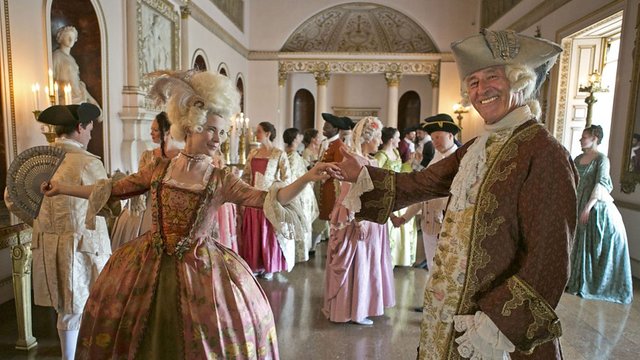
One of the first, most popular social dances was Minuet, which was danced on the prestigious courts of medieval Europe. The dance originated from lower social stratums in provinces of Poitou and Gavotte in Provence (France). Waltz dance has the similar history, but instead of France, it emerged from the provinces of southern Germany.

Dancesport originated from the form of social dance as the dance parties evolved into competitions. Standardizing the dance rules started in 1920. in England where the first national sport-amateur dance alliance was founded. First dance competition in Ballroom dances was held in London in 1922., and first world dance federation was founded in 1935. in Prague.
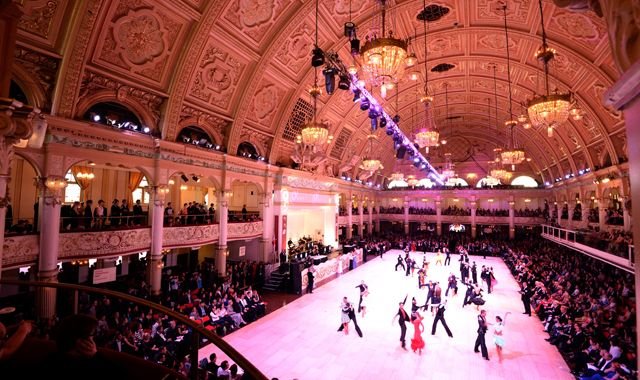
After the 2nd World War, activity of the world dance federation was renewed, and 1990. it changes its name in International Dance Sport Federation (IDSF). In 1997. it became a full-fledged member of International Olympic Committee.
Categories

Dancesport divides in four competitive categories:
- competition in Latin dances (Samba,. Rumba, Cha-cha-cha, Paso Doble and Jive)
- competition in Balroom dances (English Waltz, Viennese Waltz, Tango, Slowfox and Quickstep)
- competition in all ten dances (combination)
- competition in formations (teams of eight pairs dance Latin or Ballroom dances)

All of the competitions are also divided in age categories, and in the each category there are defined ranking classes. The competitions can be amateur or professional.
Latin dances
Samba
Samba appeared in Brasil during the 19. century, but the roots of samba date all the way back to Africa. It is considered as the national symbol of Brazil, and it can be danced individually or in pairs. In that way, origin of Samba combines three different cultures: Portugeese songs, African beats and fast Indian rituals. Originally it was played only with the percussions, and later as a form of musical accompaniment acustic guitar and cavaquinho (little guitar) were present. Through time, numerous Samba dance and music varieties were developed. Originally, Samba was the dance of celebration and joy and even today it is essential part of many carnivals, most famous being the one in Rio. From 1959., Samba is counted as an competitive dance.

Indoor samba is danced in pair, and because of its competitive character it has become the most popular, widely accepted way of dancing which encloses variety of different versions of Latinamerican dances. It is characterized by the closed posture with frequent open positions of partners. Characteristics of dance are bending and extending of knees and ankles wherefore the dancers body moves up and down in pair with specific moves of hip and pelvis, called bounce.

In the competitions, it is danced progressively on the edge imaginary circle. Contact with the audience is as important as is the contact with the partner.
(
Samba figures are based on two types of movement: bounce and contraction. Bounce means raising and lowering in the knees with the pelvis contraction, and without the visible change of height. Dances is executed in the fast 2/4 tact syncopated rhythm (48-54 beats per minute) and requires exceptionally fast leg work and breezy movement of the dancer.

Today samba is filled with a serious of characteristic style figures like walks, spins, half acrobatic and acrobatic elements. Basic samba technique includes fast brunt changes with mild raise of the knees. Man dance on the entire foot while women dance on the tiptoes in the heels.

Professional dancers often add fourth step into the basic samba movement, and also a distinct hand movements, depending on the music character.
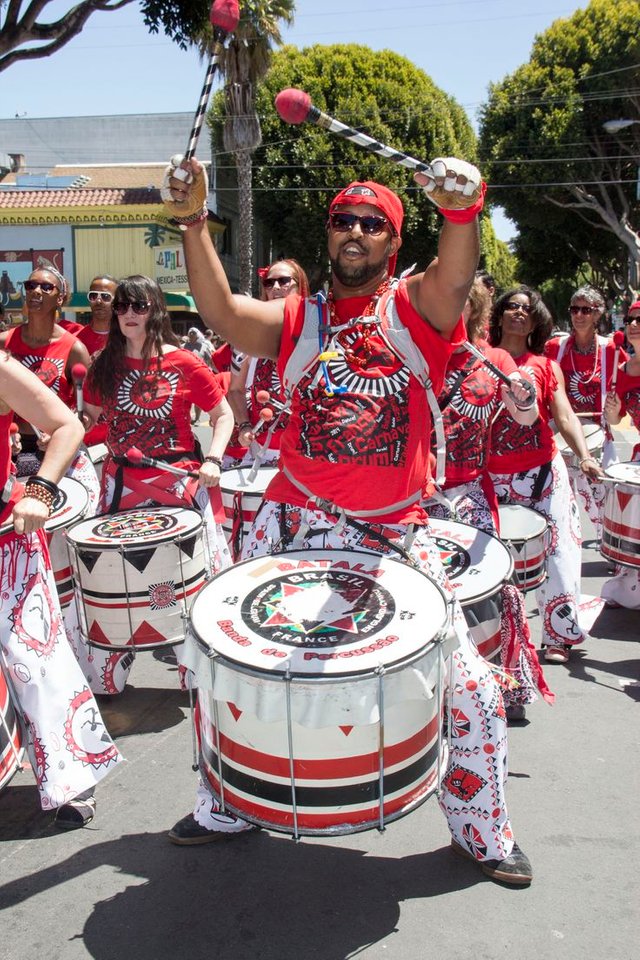
Original samba has distinct rhythm, and it is performed on the characteristic Brazilian instruments, i.e. surdo - big two headed drum, tamborim - drum that is played with the stick, chocalho - two handed shaker with aluminum frames, shekere - shaker trimmed with pearls, ganza shaker filled with pearls and gravel, apito - whistle.

Character of the dance involves expression of the dancers which reflects happiness, distinctiveness and coquetry. Although the basics of Samba are easy to learn, it is hard to achieve the true expression of the dance character. Therefore, except the pure movement techniques, choreographies and stylish figures have to be trained.
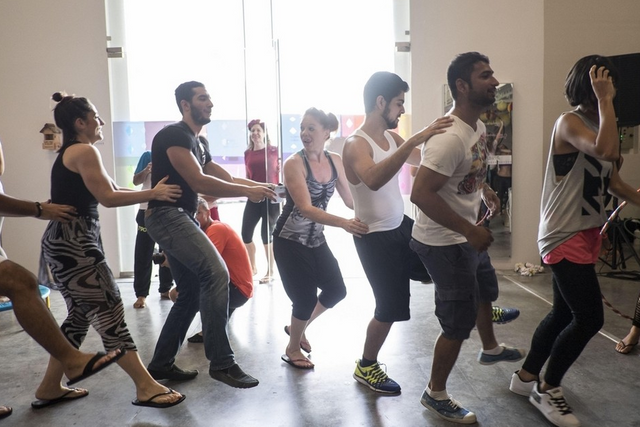
Samba is more than dance. It is diverse and versatile form of art. Through the years, the dance has evolved in numerous subcategories.

Few of the most popular are Carioca, Conga, Mesemba, Batucado and Carnivale.
History of samba
There are few theories of historical development of Samba, and the roots of its name. Some authors think that the root of the word Samba comes from the African dialect of kikongo and means belly kick. Others believe that the word Samba appeared as a compound from the African dialect of Kimbundu (Sem-ba) which means give-take. The term Samba was first registered referring to a dance in 1939., in Carapucerio magazine.
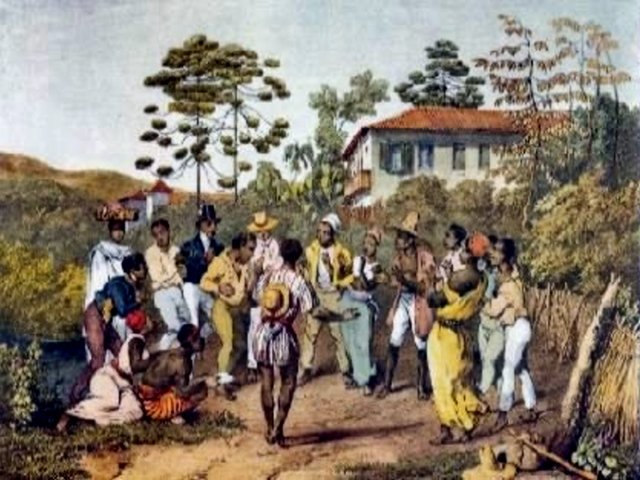
Nevertheless, the dance origin, just like the roots of Samba word, is African cultural heritage. It forms its contemporary form interacting with the European and Latinamerican urban areas, like Rio de Janeiro which became a synonym for carnival and Samba dance. It is assumed that Samba was transferred by slaves from Africa which preserved their culture through the ritual dances. Later, Samba became socially important as a medium of emancipation of Afro-brazilians and the symbol of Brazilian culture.
(
Pelo Telephone recorded the song "Donga e Mauro de Almeida" in 1917. and it is considered the first record of Samba. In the year of 1928. Ismael Silva, as the leader of compositor group, founds the first Samba school. That way a musical genres has developed as a support to the dance who revived carnival parade. Along with the technology development, primarily of the Samba radio, it became the world-famous symbol of Brazil. Further development of Samba is related to the individuals who created the music and to the subcultures from which they were coming from.
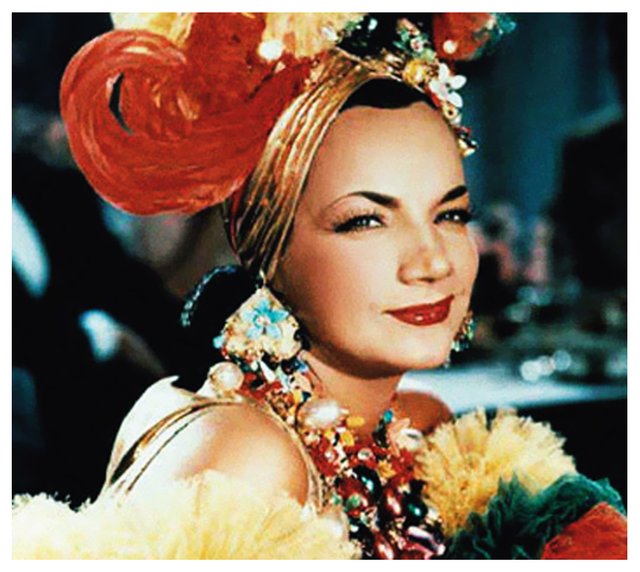
Carmen Miranda, who introduced the Brazilian rhythms in its movies, had great significance for Samba becoming popular in Europe and USA. Samba arrived in Europe in 1920's, but it became popular later, in the 50's when it also became a competitive dance.
Summary
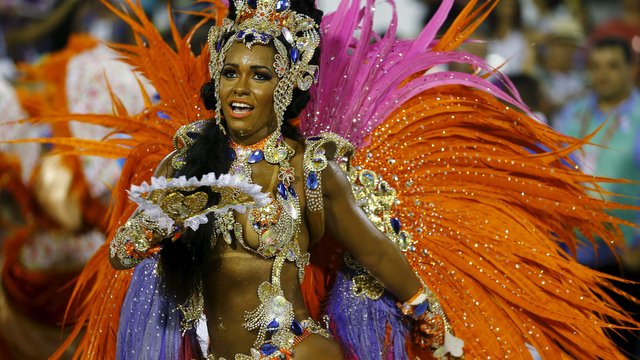
The first association is - The Carnival. Today Samba is ruling over the Brazil, and every year new melodies pop up. It is one of the first latin dances, which was the center of the religious rituals and celebrations in black slaves from middle Africa, that were brought to Brazil.

According to many, Samba is the most difficult Latinameric dance. It is fast, it is lively, and technique is not simple. But it is also very enjoyable and carefree dance, and in the same time attractive for the audience. The bounce in the knees and the contraction in pelvis are its most distinctive characteristic. That way the dancers seems to be moving up and down but not changing their height. Samba is a progressive dance, meaning that it is danced in a circle using all the space in the hall. It's sometimes danced in a zigzag manner. The contact with the audience and the parading behaviour in front it is very important.
(
In the end, I'll give you my personal favorite of Samba dance execution. At the time that this video was recorded, they were the best in the world. I'm sorry for the potato quality. Enjoy.

The next story will be about Rumba, a sensual, erotic dance in which the female is having doubts between loyalty and repulsion, and the man between being attracted and being independent.
Note: Special credit to Tea Franjić Photography whose photos I've used. Check her out!
Are there any fellow dancers in here? Share your thoughts.
Outstanding post, mich!
The girls are just stunning ;D
I know right. Imagine dancing with them every day!
Samba is by far my favourite to watch. salsa is good to watch too,
nice pics
Thanks. Tea is awesome photographer.
Beautiful inspirational post. Dance has many personalities!
Thank you for your feedback!